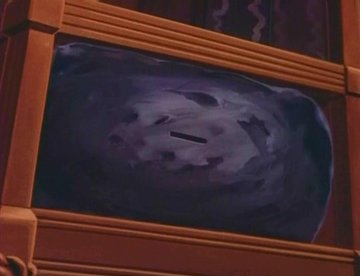Difference between revisions of "Stone of Destiny"
(→Real World History) |
Supermorff (talk | contribs) (+cat) |
||
| Line 15: | Line 15: | ||
The Stone of Scone was indeed part of the coronation ritual of the Kings of Scotland, as per the series. | The Stone of Scone was indeed part of the coronation ritual of the Kings of Scotland, as per the series. | ||
| − | The Stone of | + | The Stone of Destiny's identification with the very stone that King Arthur pulled his sword from is an invention of the series, although many Arthurian scholars believe that the two stones could well be thematically linked. In view of the Stone's history above, the equation is puzzling, since Arthur's feat is traditionally placed in London, which the Stone of Destiny did not reach until Edward I's reign, eight hundred years after the traditional dating of Arthur. Quite possibly the Stone of Destiny episode planned for the never-made "Pendragon" spin-off would have answered this question. |
==See also== | ==See also== | ||
| Line 25: | Line 25: | ||
[[Category:Canon]] | [[Category:Canon]] | ||
[[Category:Magic]] | [[Category:Magic]] | ||
| + | [[Category:Objects]] | ||
Revision as of 04:51, 24 March 2007
Stone of Destiny - A great stone upon which the Kings of Scotland, including Constantine III in 995 and Macbeth in 1040, were traditionally crowned.
History
It was also, in the time of King Arthur, the very stone that he drew Excalibur from in order to become King of Britain. In 1296, it was captured by King Edward I of England (1272-1307) in his invasion of Scotland, and removed to Westminster Abbey in London, where it was placed underneath the Coronation Chair.
When King Arthur came to London in early 1996, following his awakening upon Avalon, he and Griff encountered the Stone of Destiny at Westminster Abbey. The Stone told Arthur that he must prove himself once more worthy of Excalibur, and sent him and Griff to New York for that task. Later on, Arthur and Griff re-encountered the Stone upon its return to Scotland, although the details of that adventure are as yet unknown.
Real World History
The Stone of Destiny, more commonly known as the Stone of Scone, is a real object. Legend claims that it originally came from Ireland, where it was known as the Lia Fail and kept at Tara, the traditional stronghold of the Irish High Kings. It would scream aloud whenever the rightful High King of Ireland stepped upon it, and was said to have been first discovered by the legendary King Conn of the Hundred Battles. (An alternate, Christian-influenced version, makes it the very rock used by Jacob for a pillow at Bethel (Genesis 28:11) when he had his vision of the ladder to Heaven, brought to Ireland by an eastern princess named Tea in 585 B.C.).
The Stone of Destiny was removed from Ireland, according to legend, in the early 6th century, when it was loaned to the rulers of Dalriada, a kingdom established by Irish settlers in what is now Argyll, Scotland, who never returned it. They kept it at Iona, their sacred center, until 843, when Kenneth mac Alpin, then King of the Scots of Dalriada, seized control of Scotland from the Picts and became the first King of Scotland. Kenneth then moved the Stone to Scone, where it remained until King Edward I took it to England in 1296. It remained in Westminster Abbey until 1996, when it was returned to Scotland.
The Stone of Scone was indeed part of the coronation ritual of the Kings of Scotland, as per the series.
The Stone of Destiny's identification with the very stone that King Arthur pulled his sword from is an invention of the series, although many Arthurian scholars believe that the two stones could well be thematically linked. In view of the Stone's history above, the equation is puzzling, since Arthur's feat is traditionally placed in London, which the Stone of Destiny did not reach until Edward I's reign, eight hundred years after the traditional dating of Arthur. Quite possibly the Stone of Destiny episode planned for the never-made "Pendragon" spin-off would have answered this question.
See also
- Stone of Destiny at Wikipedia, the Free Encyclopedia
Production Background
Voice Actor: Frank Welker
